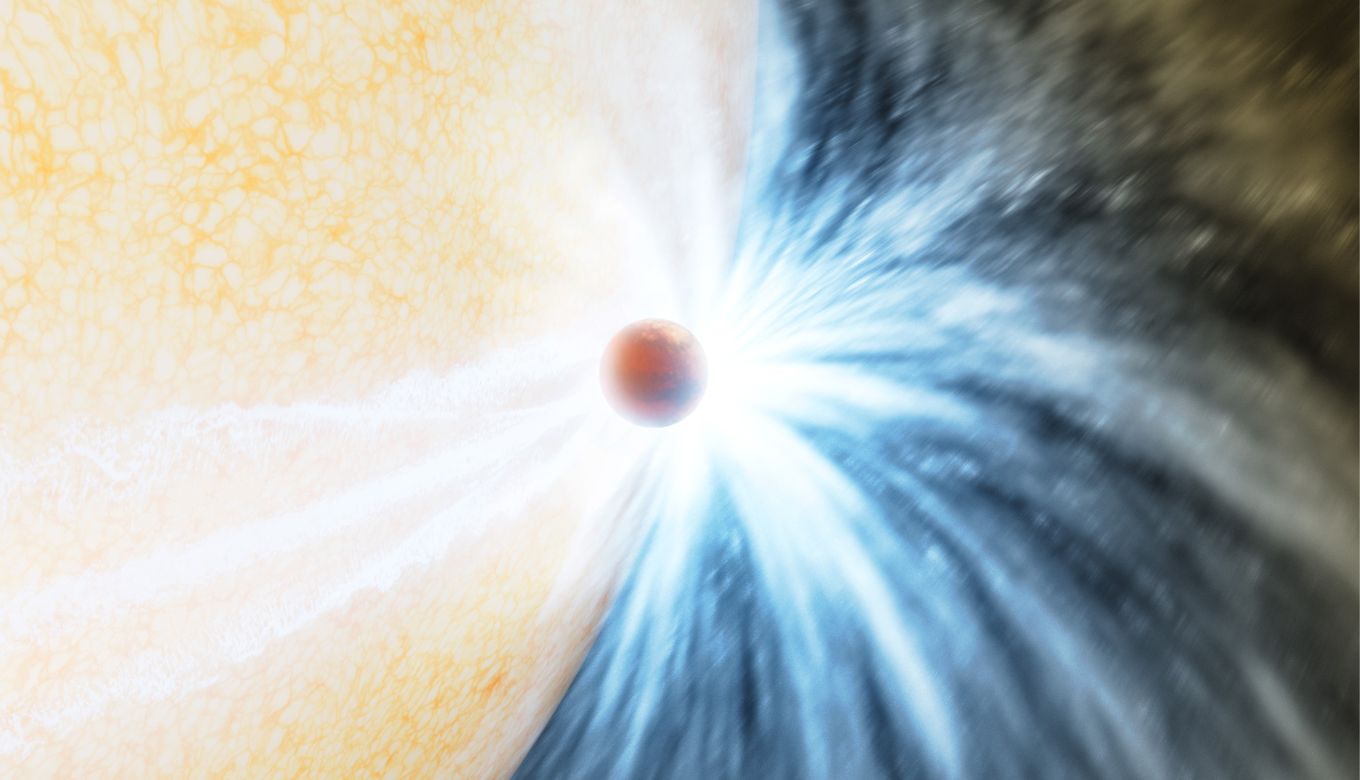There are so many stars that are near their end-stage and are known as red giant stars. These red giants engulf their nearby orbiting planets.
For the first time, NASA observed this phenomenon directly through the various observatories and NASA’s NEOWISE (Near-Earth Object Wide Field Infrared Survey Explorer) spacecraft.

NEOWISE (Near Earth Object Wide Field Object Survey Explorer) Spacecraft
“This type of event has been predicted for decades, but until now we have never actually observed how this process plays out,” said Kishalay De, an astronomer at the Massachusetts Institute of Technology in Cambridge and the study’s lead author.
This study was published in Nature Journal on 3rd May and documented this event of aging stars swallowing the nearby planet. Scientist record this event as ZTF SLRN-2020.
(The purpose of using ZTF abbreviations is it stands for the observation instrument Zwicky’s Transient Facility).
What is Red Giant Star Engulfing its nearby Planet Phenomenon?
In galaxies, many stars reached their end phase what is known as a red giant star.
An aging star grows in size and increases in diameter. As the star’s size grows it actually comes near its planet. Star’s outer atmosphere surrounded the planet, slowed the planet’s speed and shrunk its orbit, and eventually sent it below the star’s visible surface like a meteor burning up in the earth’s atmosphere.
As a red giant star merged with its nearby planet it become a few hundred times brighter than before.
How Astronomers Find this Event?

Kishalay De observed the flash of optical light during the star swallowing up the planet in the Caltech-led Zwicky Transient Facility (ZTF) an instrument based at Palomar Observatory in Southern California.
ZTF instruments look for cosmic events that change in brightness rapidly.

Zwicky’s Transient Facility (ZTF) at Palomar Observatory, Caltech
Kishalay De actually looking for the event called novae – when a dead, collapsed star (known as a white dwarf) eat up the hot gas from another nearby star. But he found out the flash of light showed much cooler gas and light that is not novae.
De was astonished by this finding and turned to the NEOWISE observatory which scans the entire sky in infrared light every six months.
De looks at the NEOWISE data that brightening was evident of dust forming around the star. De and his colleagues through the evidence of dust think that the planet fights for its life and in this chaos, it pulled hot gas away from the puffy star’s surface as it met with its doom.
As the red giant star and planet merge together more gas spread into space and cools down it becomes dust and it is visible to both ground-based infrared observatories and NEOWISE.
This new finding opens a new possibility for these events that happen every year in our galaxy.
Joe Maseiro, Deputy principal investigator for NEOWISE at IPAC at Caltech said “This discovery shows that it’s worthwhile to take observations of the entire sky and archive them because we don’t yet know all of the interesting events we might be capturing,” With the NEOWISE archive, we can look back in time. We can find hidden treasures or learn something about an object that no other observatory can tell us.”
Will Sun Swallow the Earth About Billions of Years Ago?
Astronomers predicted that the earth will also be met with the same fate as this planet engulf by its red giant star.
In about 5 billion years our sun will go through a similar aging process, and it probably reach 100 meters in diameter and will become what’s known as a red giant. It’ll absorb mercury, Venus, and Earth.
De suggests in that event brightness will be very low because our Earth, Venus, and Mercury are smaller than Jupiter-size planets in the ZTF-captured event.
“If I were an observer looking at the solar system 5 billion years from now, I might see the Sun brighten a little, but nothing as dramatic as this, even though it will be the exact same physics at work. “ De said.
Also Read:Webb Telescope Detects Water On ‘Super-Earth’; Source Still Remains A Question



